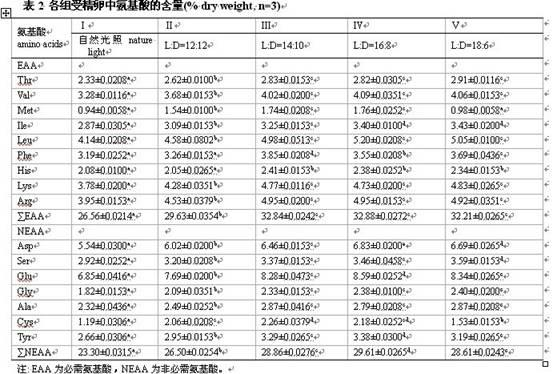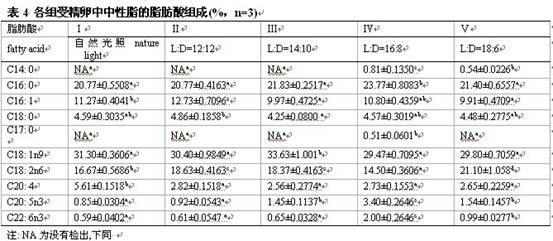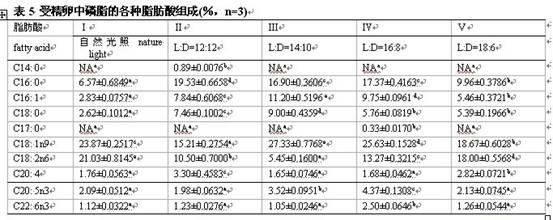Controllable synchronous brooding breeding method of cherax quadricarinatus
A technology for light-shell crayfish and breeding ponds, which is applied in the fields of climate change adaptation, application, fish farming, etc., can solve the problems of large damage to broodstock, low survival rate of shrimp fry, killing, etc., and achieves obvious effects and improves synchronous brooding. efficiency, simple operation
- Summary
- Abstract
- Description
- Claims
- Application Information
AI Technical Summary
Problems solved by technology
Method used
Image
Examples
Embodiment 1
[0023] Embodiment 1: the synchronous ovulation breeding method of red claw light shell crayfish
[0024] Step 1: Preparation of the Breeding Tank
[0025] The indoor cement pool is used as the breeding pool for red-clawed lightshell crayfish. There is no pollution source around, good ventilation, sufficient light, and complete supporting facilities such as water, electricity, and heating systems. The breeding pond needs to be equipped with an inflatable aerator, and a microporous tube or an aeration head is arranged in the pond to ensure sufficient dissolved oxygen and uniform oxygenation in the whole pond.
[0026] The specific size of each broodstock pond area can be flexibly controlled according to the production scale, and should not be too large. The area of each breeding pond is 50-100m 2 . In order to reduce the cannibalism of broodstock, concealed objects are placed in the breeding ponds, and rice field eel cages are added as concealed objects in the parent bree...
Embodiment 2
[0044] Example 2: Effects of light on reproductive performance of red-clawed crayfish and egg quality of fertilized eggs
[0045] A total of 150 well-developed female shrimps and 75 male shrimps were used for the experiment. The experiment was divided into 5 groups, and 45 shrimps in each group were raised in three non-toxic plastic breeding boxes of 80cm×50cm×50cm, and 10 shrimps were randomly placed in each tank. Female and 5 male. The water temperature is controlled at 26-28 ℃, the water depth is 50-80 cm, intermittent oxygenation, bait is fed every evening, and the feces and residual bait are sucked off in the morning of the next day, and 1 / 3 of the water is changed.
[0046] The experimental group I was the natural light group, which was raised in an outdoor plastic shed; the other four groups were placed in a dark room with a 200 W incandescent lamp as the light source, and the light intensity on the water surface was 3000 lx. The light time in the dark room started at...
Embodiment 3
[0057] Embodiment 3: the influence of temperature on the reproductive performance of red-clawed light shell crayfish
[0058] A total of 120 well-developed female shrimps and 60 male shrimps were used for the experiment. The experiment was divided into 5 groups, 45 shrimps in each group were raised in three non-toxic plastic breeding boxes of 80cm×50cm×50cm, and 10 shrimps were randomly placed in each tank. Female and 5 male. The water temperature is controlled at 26-28 ℃, the water depth is 50-80 cm, intermittent oxygenation, bait is fed every evening, and the feces and residual bait are sucked off in the morning of the next day, and 1 / 3 of the water is changed.
[0059] The experiment was carried out in the overwintering room, the room temperature was about 15°C, and the broodstock shrimp were divided into 4 groups. The first group was at natural water temperature (if the water temperature was lower than 10°C, the heating rod would be automatically heated), the second grou...
PUM
 Login to View More
Login to View More Abstract
Description
Claims
Application Information
 Login to View More
Login to View More - R&D
- Intellectual Property
- Life Sciences
- Materials
- Tech Scout
- Unparalleled Data Quality
- Higher Quality Content
- 60% Fewer Hallucinations
Browse by: Latest US Patents, China's latest patents, Technical Efficacy Thesaurus, Application Domain, Technology Topic, Popular Technical Reports.
© 2025 PatSnap. All rights reserved.Legal|Privacy policy|Modern Slavery Act Transparency Statement|Sitemap|About US| Contact US: help@patsnap.com



